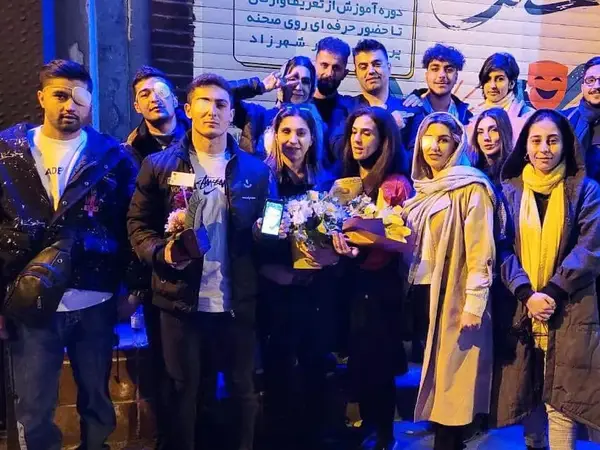A new report by a human rights group has confirmed earlier speculations that the Islamic Republic security forces have been systematically targeting protesters’ eyes.
Norway-based Iran Human Rights on Friday documented over 20 cases of people being blinded in one eye as a result of fire from the security agents during protests, adding that initial data indicates that young women were disproportionately represented among people who had sustained such wounds.
“Considering the volume of reports about protesters being shot in the head and face by security forces in most Iranian cities, leading to many, including a significant number of young women, being blinded, Iran Human Rights considers the inhumane and unlawful act to have been systematically carried out by the Islamic Republic to crush protests,” the rights group said.
IHR Director Mahmood Amiry-Moghaddam said, “Exposing the magnitude of the crimes and documenting evidence are crucial steps towards justice that require all citizens' cooperation. Islamic Republic leader Ali Khamenei and the repressive forces under his command must know that they will be held accountable for all their crimes.”
The group claimed that Iran Human Rights researchers have collected and verified information related to many citizens who have lost their sight in one or both eyes as a result of being shot with shotguns or paintball guns in the nationwide protests in the past months. The report also provided a list of cases independently verified by their researchers, noting that the real number is much higher.
The group added that they made their compiled list available to international organizations and the UN fact-finding mission. In their list, they provided photos, names, and other details such as when and where the protesters were targeted in the eye.
The report was released less than a week after the commander of Iranian special police units, Hassan Karami, denied “deliberate” shooting at sensitive parts of the protestors' bodies such as their eyes and heads. He claimed that "the performance of the special unit has shown it is not their intention to deal unprofessionally with people," noting, "I have so much confidence in the ability of the special forces that I have said many times if anyone can prove that even one person was killed due to a mistake by our staff, I will offer them a reward."
While the suppression of the nationwide protests against the Islamic Republic has so far left more than 500 citizens dead and thousands injured, Karami claimed, "The special unit forces have the ability and expertise to restore peace with the least cost and damage."
In November, over 370 ophthalmologists said that a large number of protesters have been taken to medical centers hit by rubber bullets and metal pellets as well as paintball bullets fired at them at close range during the protests, leading to the loss of eyesight in one or both eyes. They warned against the use of shotgun ‘birdshots’ and other projectiles by the security forces that have blinded over 500 protesters since mid-September.
In a November 19 report, The New York Times cited ophthalmologists of three hospitals in the capital Tehran – namely Farabi, Rasoul Akram and Labbafinezhad -- and several doctors in Kordestan province, as saying that about 580 protesters suffered serious eye injuries during the regime’s crackdown.
The full scope of numerous eye injuries has been largely concealed due to the internet blackout in Iran, but medical evidence given to the NYT by doctors, protesters, family members of patients and rights groups revealed that ophthalmology wards in hospitals were overwhelmed with eye injury victims late last year. The range of injuries included mutilated retinas, severed optic nerves and punctured irises.
